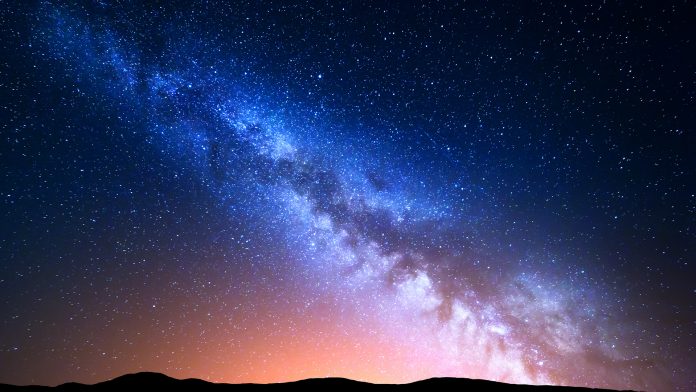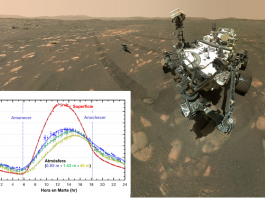Astronomers have released a gargantuan survey of the galactic plane of the Milky Way. The new dataset contains a staggering 3.32 billion celestial objects – arguably the largest such catalogue so far.
The data for this unprecedented survey of the Milky Way was collected by the Dark Energy Camera, built by the US Department of Energy, at the NSF’s Cerro Tololo Inter-American Observatory in Chile, a programme by NOIRLab.
The Milky Way Galaxy contains hundreds of billions of stars, glimmering star-forming regions, and towering dark clouds of dust and gas. Imaging and cataloguing these objects for a study is a difficult task, however, a newly released astronomical dataset known as the second data release of the Dark Energy Camera Plane Survey (DECaPS2) has revealed a staggering number of these objects in unprecedented detail.
The DECaPS2 survey, which took two years to complete and produced more than ten terabytes of data from 21,400 individual exposures, identified approximately 3.32 billion objects – arguably the largest such catalogue compiled to date.
The study’s corresponding paper, ‘The Dark Energy Camera Plane Survey 2 (DECaPS2): More Sky, Less Bias, and Better Uncertainties,’ was published in The Astrophysical Journal.
Capturing footage of the Milky Way
The Dark Energy Camera (DECam) instrument captured the collection on the Víctor M. Blanco 4-meter Telescope at Cerro Tololo Inter-American Observatory (CTIO). CTIO is a constellation of international astronomical telescopes which stand on top of Cerro Tololo in Chile at an altitude of 2,200 meters. This vantage point gives astronomers an unrivalled view of the southern celestial hemisphere, which allowed DECam to capture the Milky Way’s southern Galactic plane in such detail.
DECaPS2 is a survey of the plane of the Milky Way as seen from the southern sky, taken at optical and near-infrared wavelengths. The first trove of data from DECaPS was released in 2017, and with the addition of the new data release, the survey now covers 6.5% of the night sky and spans a staggering 130 degrees in length.
Observing the Galactic plane was challenging
Most of the stars and dust in the Milky Way are located in its disk – the bright band stretching across this image – in which the spiral arms lie. This profusion of stars and dust makes the Galactic plane challenging to observe. The dark patches of dust, that can be seen in the new images, absorb starlight and blot out fainter stars entirely, and the light from diffuse nebulae interferes with any attempts to measure the brightness of individual objects.
Another challenge arises from the sheer number of stars, which can overlap in the image and make it difficult to distinguish individual stars from their neighbours.
Despite the challenges, astronomers delved into the Galactic plane to gain a better understanding of our Milky Way. By observing near-infrared wavelengths, they were able to see past much of the light-absorbing dust.
The researchers also used an innovative data-processing approach, which allowed them to better predict the background behind each star in the Milky Way. This helped to mitigate the effects of nebulae and crowded star fields on such large astronomical images, ensuring that the final catalogue of processed data was more accurate.
Accounting for the success of DECaPS2
“One of the main reasons for the success of DECaPS2 is that we simply pointed at a region in the Milky Way with an extraordinarily high density of stars and were careful about identifying sources that appear nearly on top of each other,” said Andrew Saydjari, a researcher at the Center for Astrophysics, Harvard & Smithsonian and lead author of the paper. “Doing so allowed us to produce the largest set of images ever from a single camera, in terms of the number of objects observed.”
Edward Schlafly, a researcher at the AURA-managed Space Telescope Science Institute, added: “When combined with images from Pan-STARRS 1, DECaPS2 completes a 360-degree panoramic view of the Milky Way’s disk and additionally reaches much fainter stars.
“With this new survey, we can map the three-dimensional structure of the Milky Way’s stars and dust in unprecedented detail.”
The Milky Way study has been a great achievement
“Since my work on the Sloan Digital Sky Survey two decades ago, I have been looking for a way to make better measurements on top of complex backgrounds. This work has achieved that and more,” said Douglas Finkbeiner, a professor at the Center for Astrophysics, co-author of the paper, and principal investigator behind the project.
Debra Fischer, division director of Astronomical Sciences at NSF, concluded: “This is quite a technical feat. Imagine a group photo of over three billion people and every single individual is recognisable! Astronomers will be poring over this detailed portrait of more than three billion stars in the Milky Way for decades to come. This is a fantastic example of what partnerships across federal agencies can achieve.”









